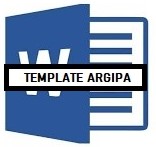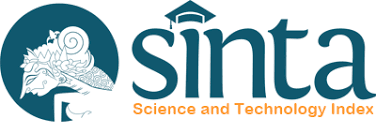Protein and vitamin e intake are related to hemoglobin levels in thalassemia patients in The Tangerang Regency Hospital
DOI:
https://doi.org/10.22236/argipa.v5i1.3922Abstract
Thalassemia is a genetic disease that are passed from parents to children through DNA which causes blood cells to lack globin chains. Children with thalassemia experienced an increase in energy expenditure, a lack of vitamin and minerals so that it has an impact on the state of malnutrition which will have a direct effect on the growth of patients with thalassemia. This study's purpose was to analiyzing relationship between protein intake, iron, vitamin C, vitamin E, and nutrition status with hemoglobin levels in thalassemia patients in the Tangerang Regency Hospital. The subjects of this study are 29 thalassemia patients. The method of the research is cross-sectional. Sampling method of this study was quota sampling and technique of data analysis with Pearson Moment Product. Average protein intake was 96%, average iron intake was 72,5%, average vitamin C intake was 79,5%, average vitamin E intake was 51,1%, average z-score was -1,59 SD and hemogloblin level 8,1 g/dl. The results showed that protein intake and vitamin E intake related to hemoglobin levels. Whereas iron intake, vitamin C, and nutritional status not related to hemoglobin level.
Keywords: Hemoglobin Levels, Protein Intake, Thalassemia, Vitamin E
Downloads
References
Arijanti, L. & Nasar, S. S. (2003). Masalah nutrisi pada talasemia. Sari Pediatri, 5(1), 21-26.
Awalamaroh, F. A., Rahayu, L. S., & Yuliana, I. (2019). Compliance of iron tablets consumption related to anemia status in pregnant women in Cikarang Health Center Bekasi. ARGIPA (Arsip Gizi dan Pangan), 3(2), 80-90.
Balitbangkes. (2013). Riset Kesehatan Dasar (National Health Survey). In Kementrian Kesehatan RI (Issue 1). https://doi.org/10.1007/s13398-014-0173-7.2
Besuni, A. (2013). Hubungan Asupan Zat Gizi Pembentuk Sel Darah Merah dengan Kadar Hemoglobin pada Ibu Hamil di Kabupaten Gowa. Skripsi. Makasar: Fakultas Kesehatan Masyarakat, Univer-sitas Hasanudin.
Caocci, G., Efficace, F., Ciotti, F., Roncarolo, M. G., Vacca, A., Piras, E., Littera, R., Markous, R. S. D., Collins, G. S., Ciceri, F., Mandelli, F., Marktel, S., & La Nasa, G. (2012). Health related quality of life in Middle Eastern children with beta-thalassemia. BMC blood disorders, 12(6), 1-7.
Habibie, I. Y., Oktavia, F., & Ventiyaningsih, A. D. I. (2018). Asupan vitamin C tidak berhubungan dengan kadar hemoglobin pada remaja putri di SMA Negeri 5 Kota Malang. Indonesian Journal of Human Nurition, 5(2), 113-124.
Kementrian Kesehatan RI. (2018). Pedoman Nasional Pelayanan Kedokteran Tatalaksana Talasemia. Jakarta.
Kementerian Kesehatan RI. (2018). Biro Komunikasi dan Pelayanan Masyarakat.
Kusudaryati, DPD. & Prananingrum, R. (2018). Hubungan asupan protein dan status gizi dengan kadar hemoglobin pada remaja putri anemia. Profesi, 16(1): 214-219.
Mariani, D. (2011). Analisis Faktor yang Memengaruhi Kualitas Hidup Anak Talasemia Beta Mayor di RSU Kota Tasikmalaya dan Ciamis. Skripsi. Jakarta: Universitas Indonesia.
Ningsih, D., Panunggal, B., Pramono, A., & Fitranti, D. (2018). Hubungan asupan protein dan kebiasaan makan pagi terhadap kadar hemoglobin pada anak usia 9-12 tahun di Tambaklorok Semarang Utara. Journal of Nutrition College, 7(2): 71-76.
Pfeifer, W. P., Degasperi, G. R., Almeida, M. T., Vercesi, A. E., Costa, F. F., & Saad, S. T. (2008). Vitamin E supplementation reduces oxidative stress in beta thalassaemia intermedia. Acta haematologica, 120(4), 225–231. https://doi.org/10.1159/000201988
Rund, D., & Rachmilewitz, E. (2005). Beta-thalassemia. The New England journal of medicine, 353(11), 1135–1146. https://doi.org/10.1056/NEJMra050436
Soedijanto, SGA., Kapantow, NH., & Basuki, A. (2015). Hubungan antara asupan zat besi dan protein dengan kejadian anemia pada Siswi SMP Negeri 10 Manado. Pharmacon, 4(4): 327-332.
Sy, E., Alioes, Y., dan Almurdi. (2010). Efek pemberian vitamin E terhadap penurunan kadar malondialdehid (MDA) hati mencit strain Jepang akibat paparan minyak goreng berulang. Jurnal Riset Kimia, 4(1): 15-19.
Thavorncharoensap, M., Torcharus, K., Nuchprayoon, I., Riewpaiboon, A., Indaratna, K., & Ubol, BO. (2010). Factors affecting health-related quality of life in Thai children with thalassemia. BMC blood disorders, 10:1.
Tienboon, P., Sanguansermsri, T., & Fuchs, GJ. (1996). Malnutrition and growth abnormalities in children with beta thalassemia major. The Southeast Asian journal of tropical medicine and public health, 27(2): 356–361.
Villalpando, S., Pérez-Expósito, AB., Shamah-Levy, T., & Rivera, JA. (2006). Distribution of anemia associated with micronutrient deficiencies other than iron in a probabilistic sample of Mexican children. Annals of nutrition & metabolism, 50(6): 506–511.
Wati, EK., Proverawati, A., Purnamasari, DU., & Rahardjo, S. (2015). Tingkat asupan zat gizi dan status gizi penderita thalassemia di Kabupaten Banyumas. Jurnal Kesmasindo, 7(2): 153-166.
Willows, ND., Barbarich, BN., Wang, LC., Olstad, DL., & Clandinin, MT. (2011). Dietary inadequacy is associated with anemia and suboptimal growth among preschool-aged children in Yunnan Province, China. Nutrition research (New York, N.Y.), 31(2): 88–96. https://doi.org/10.1016/j.nutres.2011.01.003.
Zimmermann, MB., Fucharoen, S., Winichagoon, P., Sirankapracha, P., Zeder, C., Gowachirapant, S., Judprasong, K., Tanno, T., Miller, JL., & Hurrell, RF. (2008). Iron metabolism in heterozygotes for hemoglobin E (HbE), alpha-thalassemia 1, or beta-thalassemia and in compound heterozygotes for HbE/beta-thalassemia. The American journal of clinical nutrition, 88(4): 1026–1031. https://doi.org/10.1093/ajcn/88.4.1026
Zuffo, CR., Osório, MM., Taconeli, CA., Schmidt, ST., da Silva, BH., & Almeida, CC. (2016). Prevalence and risk factors of anemia in children. Jornal de pediatria, 92(4): 353–360. https://doi.org/10.1016/j.jped.2015.09.007.

















